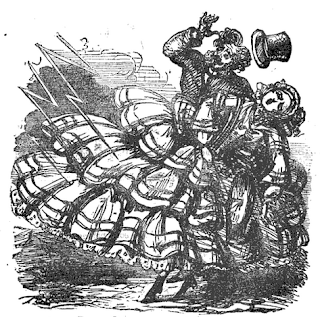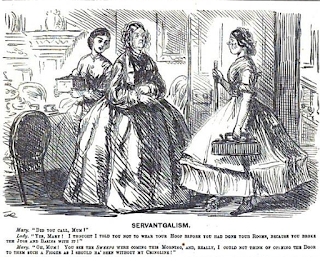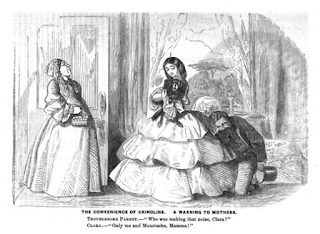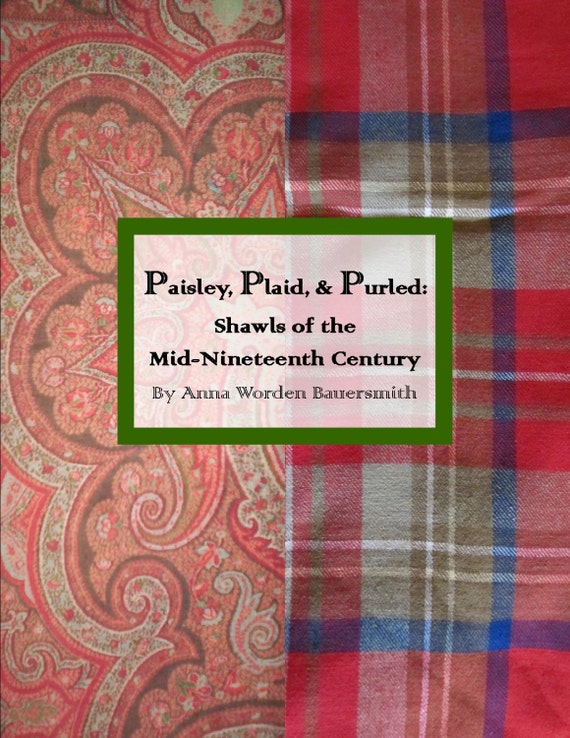Just for fun, here are a few favorite mid-nineteenth century cartoons about crinolines. Some funny, some casually classist, some intended seriously:"Why do women like stays?" "Because they feel so-laced by them."--Frank Leslie's, 1862, p.561
 |
| 1858. "The Dangers of Crinoline" Not intended as a humor, but perhaps the 2-in-1 hoop lightning rod won't catch on. |
 |
| "Song of the Hoop" Harper's New Monthly Magazine 1857 This needs to be performed at Conference next year. Ideally with choreography. |
 |
| Punch Aug 23, 1856. Other than the exaggerated circumference of hoop and skirt, this one isn't too bizarre. I like that you can see an under-hoop petticoat in use. |
 |
| "The 'Skirt Movement' Illustrated." Peterson's 1856. Text: "Little Boy--Ma! call to Bridget! She's gone and put my hoop under her dress." |
 |
| Punch, Nov 21, 1863 |
Mary: "Did you call, Mum?"
Lady: "Yes, Mary! I thought I told you not to wear your hoop before you had done your rooms, because you broke the jugs and basins with it!"
Mary: "Oh, Mum! You see the sweeps were coming this morning, and, really, I could
not think of opening the door to them such a figger as I should ha' been without my crinoline!
 |
| Graham's Magazine, 1856 |
The Convenience of Crinoline. A Warning to Mothers.
Troublesome Parent.--"Who was making that noise, Clara?"
Clara.--"Only me and Moustache, Mamma!"
 |
| Punch. January 1857. When crinolines aren't hiding illicit beaux, they're apparently quite adept at fending them off. |
 |
| Frank Leslie's, 1857 |
 |
| Punch. Jan 17, 1857 I'd love to see an inflatable crinoline at some point. |
Caroline. "Dear me! --I'm only Thirty-Two--I must Inflate a little!"
 |
| Punch, December 12, 1857. Playing "Crimea" with sister's crinoline for a tent. |














